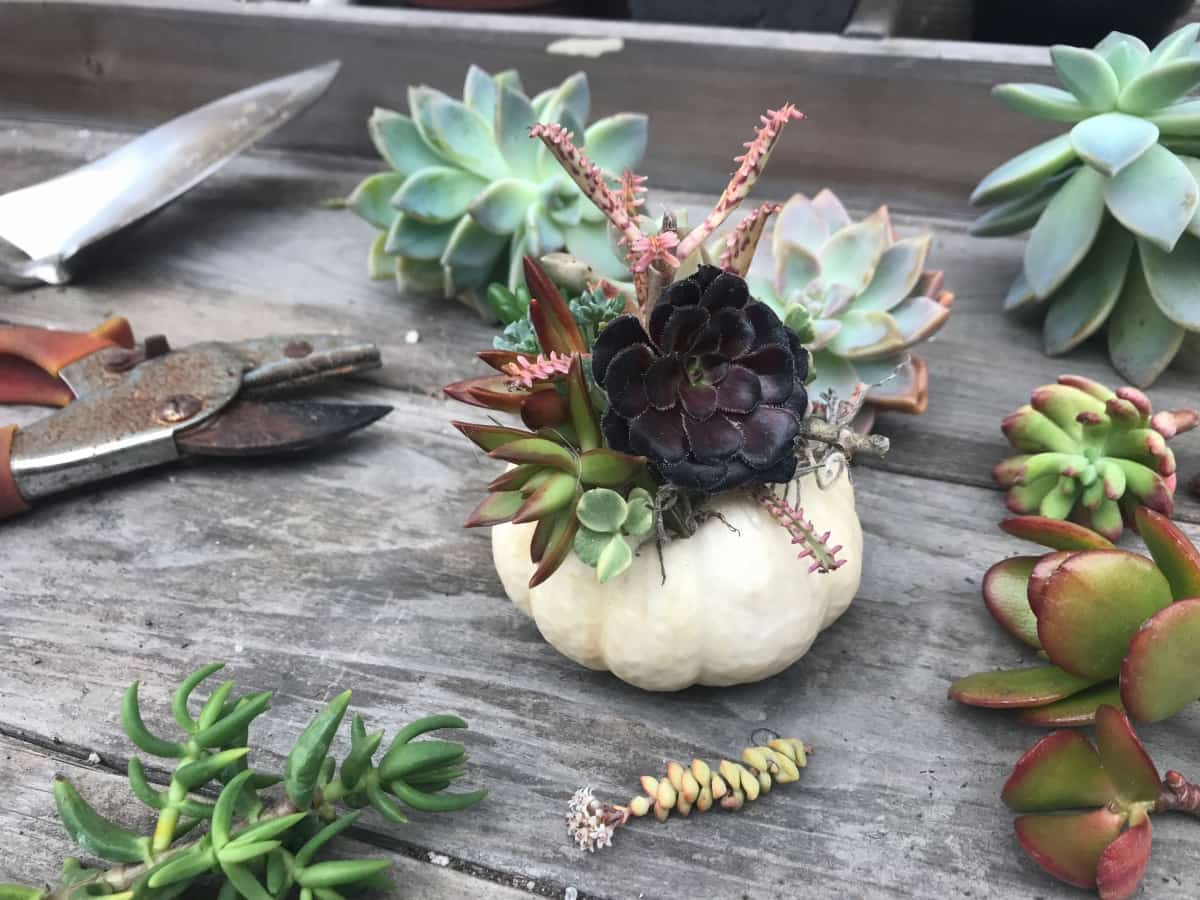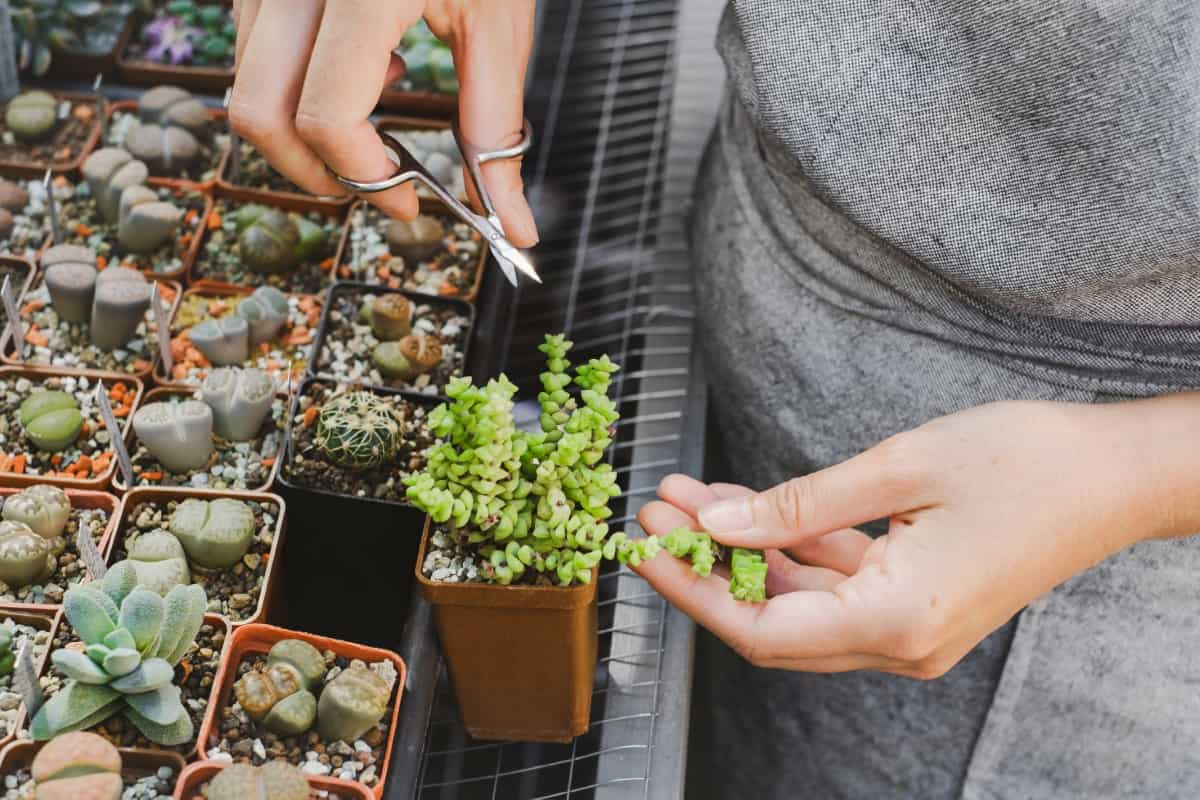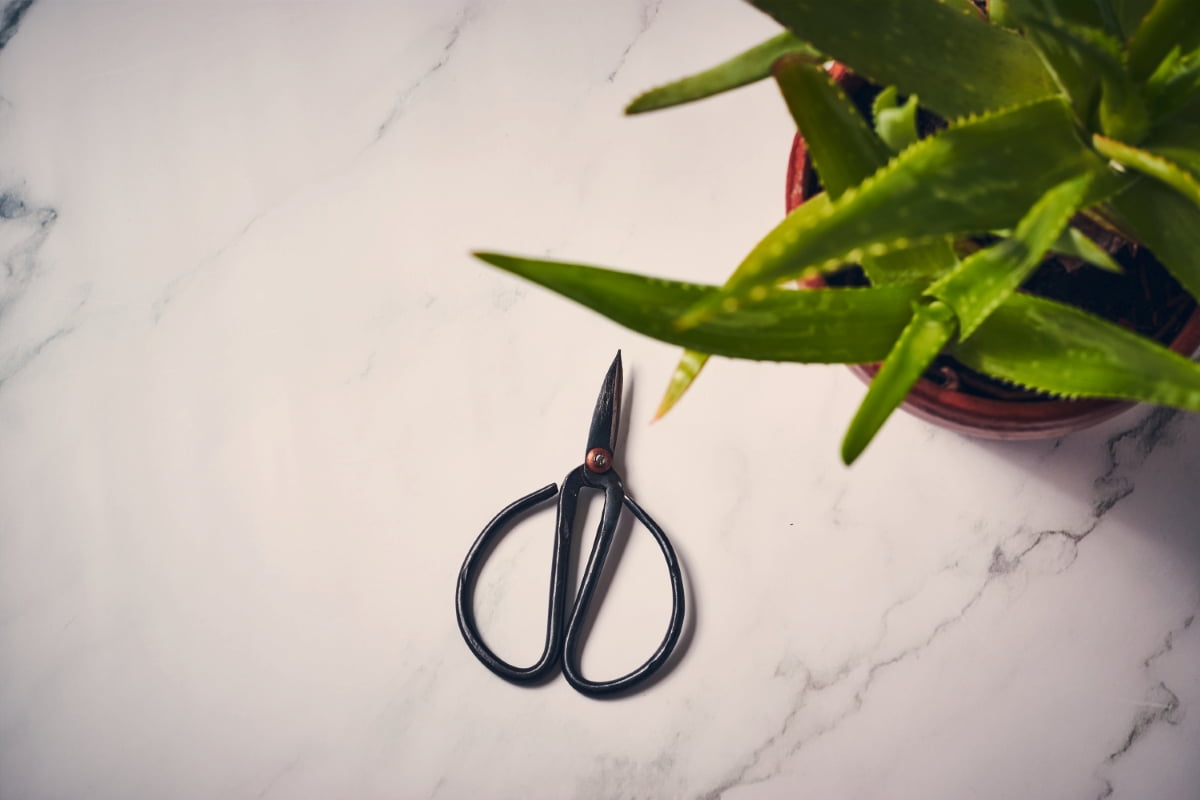Pruning succulents is a beneficial practice that can positively impact the health and longevity of these unique plants. By trimming them from time to time, you can prevent rot, encourage new growth, and ensure they thrive in your indoor or outdoor spaces. Trimming your succulents with precision can prevent rotting, encourage new growth, and help these resilient beauties thrive for years.

Techniques to Prune Succulents
Tools and Equipment Needed for Pruning Succulents
- Pruning shears: These sharp, handheld scissors are perfect for trimming small succulent leaves and stem. Look for ones with a clean-cutting action to avoid damaging the plant.
- Garden gloves: While not necessarily a tool, gardening gloves can protect hands from thorns or spines that some succulents may have.
- Disinfectant spray: Before and after each use, it’s important to disinfect your pruning tools to prevent the spread of diseases or pests among plants. A simple spray with rubbing alcohol or hydrogen peroxide will do the trick.
- Tweezers: You may need tweezers to carefully remove dead leaves or debris between tight spaces in your succulent plants.
- Small paintbrush: This handy tool can gently brush off any excess soil or dust accumulated on your succulent leaves over time.
When is the Best Time to Prune Succulents?
The best time to prune most succulents is in the Spring when they are in their active growing phase. This is when they have the highest potential for new growth and can recover quickly from pruning cuts. Pruning too early or too late in the season can disrupt the natural growth cycle of your succulent and may result in slower healing or even damage to the plant. Pruning during the right time gives your succulent the best chance for healthy regrowth and overall vitality.
Step-By-Step Guide to Pruning Succulents
- Firstly, gather all the necessary tools and equipment before you start. You’ll need a pair of clean and sharp pruning shears or scissors.
- Next, identify which parts of your succulent need pruning. Look for dead or damaged leaves that are brown or shriveled. These should be removed completely. Also, keep an eye out for any overgrown stems that may be crowding the plant.
- Once you have identified what needs to be pruned, carefully cut away those parts using your sterilized shears or scissors. After removing the unwanted growth, take some time to observe how your succulent looks now. If needed, you can further shape it by trimming any leggy stems or branches.
- Remember that not all succulents require heavy pruning. Some varieties naturally grow compactly and don’t need much trimming at all. Always research specific care instructions for each type of succulent before diving into pruning.
How to Identify Dead or Damaged Parts for Pruning Succulents?
One important aspect of pruning succulents is identifying dead or damaged parts that need removal. This ensures the overall health and vitality of your plants. To start, carefully examine each succulent leaf by leaf. Look for any signs of discoloration, wilting, or shriveling. These are indications that the particular section may be dead or dying.
In case you missed it: How to Start an Indoor Pot Succulent Garden from Scratch: DIY Succulent Planting in Containers

If you notice any blackened or mushy areas on the roots, they are decaying and should be pruned. Another way to identify dead parts is by observing their growth patterns. Succulents naturally shed old leaves from the bottom up, so if you see dry and withered leaves at the base while new growth appears healthy at the top, it’s likely time for some pruning.
Techniques for Pruning Different Types of Succulents
Succulents come in various shapes and sizes, so different techniques may be required when pruning them. Understanding the specific needs of each type of succulent will help you achieve optimal results. For rosette-shaped succulents such as Echeveria and Sempervivum, removing any dead or damaged leaves from the base of the plant is best. This not only improves its appearance but also prevents rot from spreading.
On the other hand, trailing succulents like String of Pearls or Burro’s Tail require a slightly different approach. Prune back any overgrown stems at the desired length using clean scissors or pruners to maintain their cascading shape. For tall-growing varieties like Aloe Vera or Sansevieria, removing any yellowing or withered leaves at their base can promote new growth and prevent overcrowding. Additionally, you can trim off leggy stems to encourage bushier growth.
Tips for Pruning Succulents to Promote Growth and Health
- Start with clean, sharp tools: Before pruning your succulents, ensure your tools are clean and sharp.
- Remove dead or damaged leaves: Dead leaves not only detract from the overall appearance of your succulent but can also attract pests and diseases. Gently remove any brown or withered leaves using sterilized scissors or pruners.
- Avoid over-pruning: While it’s important to prune regularly for optimal health and appearance, be careful not to overdo it. Only trim what is necessary to maintain shape and remove damaged parts.
How to Prevent Over-Pruning or Under-Pruning Succulents?
To prevent over-pruning, start by assessing the condition of your succulent. Look for any signs of stress or damage before you begin trimming. Succulents rely on their leaves for photosynthesis and water storage, so removing too many can hinder their ability to thrive. Instead, focus on selectively removing damaged or dead leaves as needed.
On the other hand, under-pruning can result in succulents becoming top-heavy with excess foliage that blocks light from reaching the lower plant parts. To prevent this, regularly inspect your succulent for signs of overcrowding or shading. Take time to disinfect your tools before and after each use with rubbing alcohol or a mild bleach solution.
Pruning Succulents for Propagation Purposes
Firstly, identify healthy leaves or stems that can be removed without causing harm to the mother plant. Look for mature leaves or stems with no damage or disease. Once you’ve selected the right parts for propagation, allow them to dry out and callus over for a few days. This step is important as it helps prevent rot when you plant them in soil later. Next, place the dried leaves or stems onto well-draining soil and lightly mist them with water every few days. Within weeks, you’ll start noticing tiny roots forming and new baby plants emerging.
In case you missed it: How to Grow Succulent Seeds: Easiest and Fast Growing Succulents from Seed

Pruning Succulents Outdoors
Pruning succulents outdoors is essential to maintain your plants’ health and beauty. Whether you have a sprawling succulent garden or a few potted plants on your patio, outdoor pruning can significantly impact their overall growth and appearance. Next, carefully trim these unwanted parts using sharp, clean pruning shears or scissors. Be sure to make clean cuts close to the base of the plant for optimal healing and regrowth.
How to Prune Succulents in Pots?
Pruning succulents in pots is necessary to maintain their health and aesthetics. Firstly, assess the overall condition of your plant. Look for any dead or damaged leaves that need to be removed. Use clean pruning scissors to make clean cuts at the base of these leaves. Remember that less is often more when it comes to pruning succulents.
It’s better to err on caution and remove fewer leaves than risk damaging the plant by over-pruning. After pruning your potted succulent, give it time to recover before watering again. This will allow open wounds from pruning cuts to heal properly without risking infection or rot.
How to Trim Indoor Succulents?
Trimming indoor succulents is an important part of their care routine and can help promote healthy growth. Inspect the plant for dead or damaged leaves to trim your indoor succulents. When trimming indoor succulents, it’s important to remember that less is often more. Avoid over-pruning by removing what is necessary for the plant’s health and appearance. In addition to regular trimming, you’ll want to provide proper lighting conditions for your indoor succulents. Place them near bright windows where they will receive ample sunlight throughout the day.
Common Mistakes to Avoid when Pruning Succulents
- Over-pruning: It’s easy to get carried away with pruning and remove too much foliage from your succulents. Remember that these plants store water in their leaves, so cutting off too many leaves can leave them susceptible to dehydration and damage.
- Under-pruning: On the other hand, neglecting to prune your succulents can lead to overgrowth and legginess. Regularly check for dead or dying plant parts and remove them promptly.
- Improper technique: Take care when using sharp tools around delicate succulent leaves or stems. Always cut at an angle above a leaf node or stem joint for optimal healing and growth.
In case you missed it: How to Revive Dying Succulents: Reasons, Treatment, and Solutions

Conclusion
Succulents are diverse plants adapted to survive in arid environments. Pruning also lets you control your succulent’s size and shape. Regularly trimming back excessive growth helps prevent this stretching effect by encouraging denser growth closer to the base of the plant. Pruning encourages new growth. This enhances the aesthetic appeal of your succulent and promotes its overall growth and development.
- Feed Your Flock for Less: Top 10 Tips to Save on Chicken Feed
- Ultimate Guide to Ossabaw Island Hog: Breeding, Raising, Diet, and Care
- Hatching Answers: The Top 10 Reasons Your Chickens Aren’t Laying Eggs
- Eggs and Economics: Breaking Down the Cost of Raising Backyard Chickens
- Defend Your Greens: Proven Methods to Keep Iguanas Out of Your Garden
- Ultimate Guide to Cinnamon Queen Chicken: A Comprehensive Guide for Beginners
- Ultimate Guide to California Tan Chicken: Breeding, Raising, Diet, Egg-Production and Care
- Ultimate Guide to Marsh Daisy Chicken: Breeding, Raising, Diet, and Care
- 10 Types of Chicken Farming Businesses You Can Start for Profits